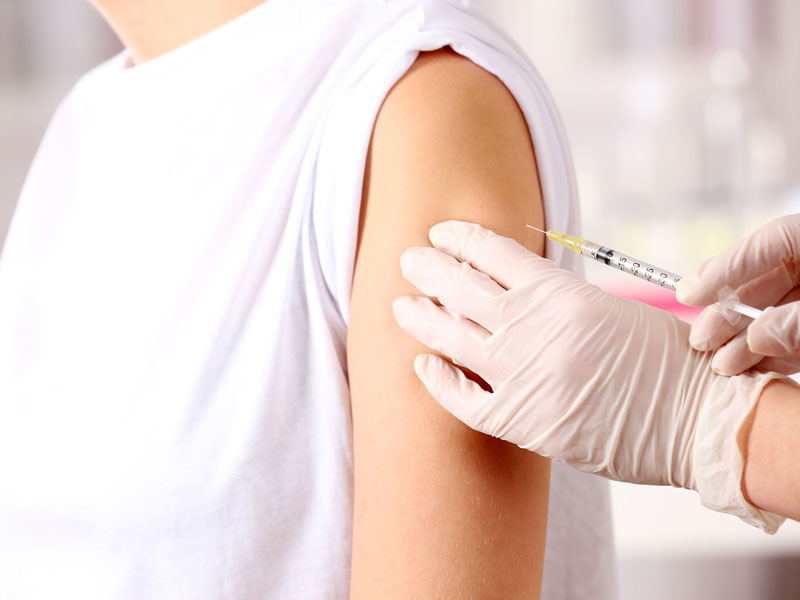
February 24, 2021, 10:30 am Michael Devitt — The CDC’s Advisory Committee on Immunization Practices, together with the AAFP and several other medical organizations, released the 2021 adult and childhood immunization schedules on Feb. 12.

Both schedules underwent a number of changes and contain updates on several vaccines for each population, including recommendations on vaccination against COVID-19. Schedules are available on AAFP.org and the CDC website.
Additional adult immunization schedule updates that family physicians should be aware of included the following:
Additional child/adolescent immunization schedule updates that family physicians should be aware of included the following:
COVID-19 vaccination recommendations for children, adolescents and adults are highlighted under the Table 1 recommendations for each schedule.
The ACIP recommends the use of COVID-19 vaccines within the scope of the Emergency Use Authorization or Biologics License Application for the particular vaccine. Interim ACIP recommendations for the use of COVID-19 vaccines are available on the ACIP Vaccine Recommendations and Guidelines web page.
The AAFP, which reviews all ACIP recommendations for approval through the Commission on Health of the Public and Science, approved the ACIP’s recommendations in December 2020.
Any authorized COVID-19 vaccine in accordance with the recommended age and conditions of use is recommended for those ages 16 and older with a phased allocation of vaccine distribution. The recommendations provide guidance for federal, state and local jurisdictions while vaccine supply is limited, considering scientific evidence regarding COVID-19 epidemiology, ethical principles and vaccination program implementation considerations. ACIP COVID-19 vaccine allocation recommendations are interim and may be updated based on changes in conditions of EUA, FDA authorization for new COVID-19 vaccines, changes in vaccine supply or changes in COVID-19 epidemiology.
Phase 1 of COVID-19 vaccination is divided into three stages. Phase 1a includes all health care personnel and residents of long-term care facilities; phase 1b includes frontline essential workers (non-healthcare workers) and people 75 years and older; and phase 1c includes everyone 65-74 years of age, those 16-64 years of age with medical conditions that increase the risk for severe COVID-19 disease and all essential workers not previously vaccinated.
Phase 2 includes everyone 16 years and older not already recommended for vaccination.
ACIP defines essential workers using guidelines developed by the Department of Homeland Security’s Cybersecurity and Infrastructure Security Agency. Frontline essential workers are a subset of essential workers likely at highest risk for work-related exposure to SARS-CoV-2 infection because their work-related duties must be performed on-site in close proximity to the public or to coworkers. The list of frontline essential workers includes first responders (e.g., firefighters and police officers), corrections officers, U.S. Postal Service workers, grocery store workers, public transit workers and those who work in the education sector.
States and jurisdictions may differ in the phases of distribution, so it is important to refer to the plan being used in a specific area. AAFP members are invited to view a list of state-by-state distributions plans on the Academy’s COVID-19 Vaccine Distribution web page.
Pamela Rockwell, D.O., the AAFP’s liaison to the ACIP and an associate professor in the Department of Family Medicine at the University of Michigan Medical School in Ann Arbor, explained the effect of the pandemic on immunization rates throughout the population to AAFP News.
“As always, improving childhood and adult vaccination rates must be a priority for all family physicians, now more importantly than ever,” said Rockwell. “Childhood vaccination coverage has declined in all milestone age cohorts (except for birth-dose hepatitis B coverage typically administered in the hospital setting) due to fewer outpatient visits to primary care offices during the pandemic. This creates alarming conditions with high probability for a vaccine-preventable disease outbreak, especially due to measles, which requires vaccination coverage of 90% to 95% to maintain herd immunity to prevent outbreaks.”
Rockwell suggested a number of ways family physicians could modify the processes by which vaccines are traditionally administered to children to help them get caught up.
“Successful strategies to improve immunization rates for all ages include regularly assessing patients’ vaccine needs at every visit, whether the visit is for preventive, acute or chronic care, and whether the visit is in person or through telemedicine,” Rockwell said. “Followup immunization recommendations made during telemedicine visits can be completed during established followup visits, or additional ‘immunization only’ visits with medical assistants or nurses can be offered.”
Rockwell also suggested clinicians could reach out to patients by reviewing EHRs and state immunization registries, creating lists of patients who are behind on vaccinations, and offering drive-through immunization clinics.
Rockwell also emphasized the importance of educating patients about vaccines and dispelling myths about immunizations.
“Ongoing vaccine education to combat the growing spread of disinformation and misinformation online is especially important through direct physician/patient contact, use of mailers, office posters and handouts, and through social media platforms like Twitter, Facebook and YouTube,” she said.
The AAFP is continually monitoring the COVID-19 vaccine development, authorization and distribution process to update members on how to prepare themselves, their practices and patients. Updated information can be found on the Academy’s COVID-19 Vaccine web page.
The AAFP also recently launched a consumer PR campaign encouraging people to be vaccinated for influenza and to receive other routine immunizations. The campaign aims to reduce vaccine hesitancy and emphasize that vaccination is a selfless act of prevention that helps protect those who are more vulnerable and builds a community of immunity. Members are invited to visit the campaign site, which contains a brief video, patient-friendly materials, and other resources for encouraging people to get their immunizations.
Finally, the AAFP’s Immunizations & Vaccines web page has robust information about immunizations and increasing routine immunization rates during the COVID-19 pandemic.